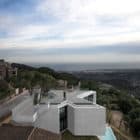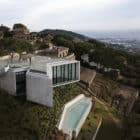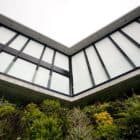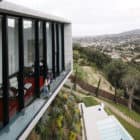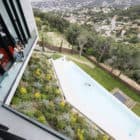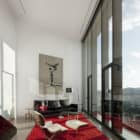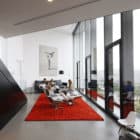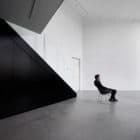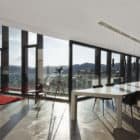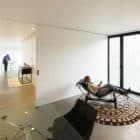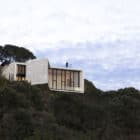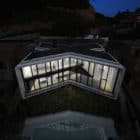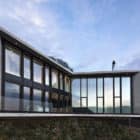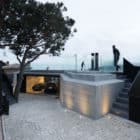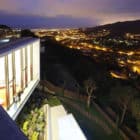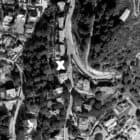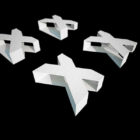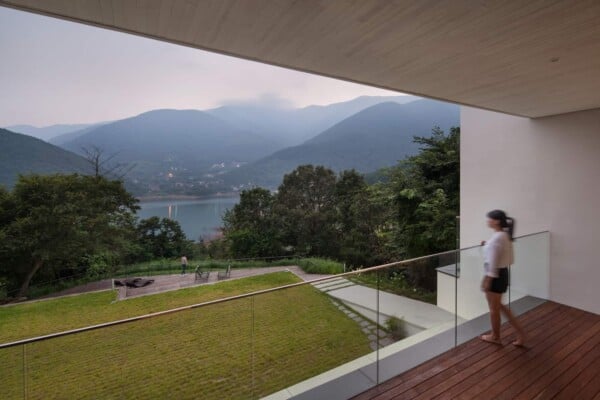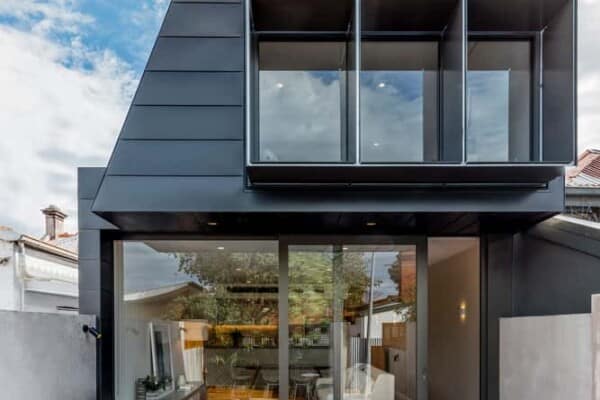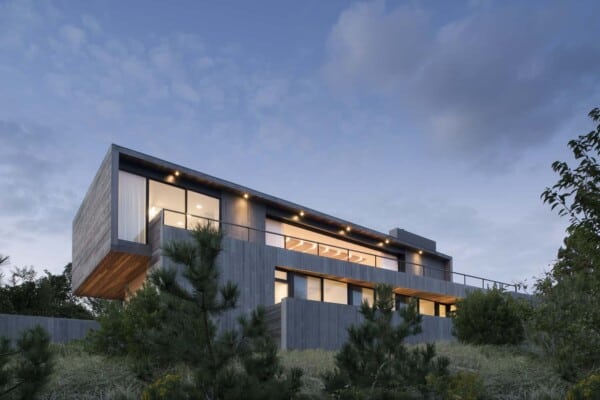Barcelona-based architects Cadaval & Solà-Morales have designed the X-House.
Completed in 2012, this contemporary home is situated on a very steep slope in Barcelona, Spain. Its unique x-shape was the result of solving numerous challenges associated with building on such terrain.
X-House by Cadaval & Solà-Morales:
“The X House project aims to solve by the definition of a system, language, or even through a unique form, a number of inquiries that rise up when we read the specific given site: how to protect and give protagonism to an impressive pine, that is located on the top of the site, and that makes access and approximation to the house extremely complex from the street; how to avoid deciding between the views to the sea and those to the mountains, and allow both visions in opposite directions; how to neutralize through form the presence of the contiguous constructions, to build up a fake isolation that denies the neighbours; how to double the main views, permitting quality frontal views from the front and the rear of the house; how to resolve so many a priories with a simple movement that answers to all of the previous aims without prioritizing nor explicitly formulating a response to any of them. The form, a unique form, is the result of a long process of search of individual answers to each of those challenges; thus, the form is not an a priori, but an effort to give a unitary response that satisfies each of the questions rose up in the design process.
The X House is also a constructive exploration: a technique regularly used for the infrastructural construction such as bridges and tunnels, is here developed to meet the architectural scale, aiming to incorporate efficiency, and reduction of costs to the construction. The use of a mixed technique based on the application of a high-density concrete allows projecting the material at a high pressure to a single-sided formwork, and to acquire high structural resistance in extremely short periods of time. Thus, it is possible to project continuous 6m high walls without the need to use a two-sided formwork (which would be the regular construction procedure). The house is therefore a living expression of the specific technique, and accumulates in its skin the diverse and continuous knowledge acquired within the process of construction.
The house is located on the upper part of a hill in Cabrils, in the outskirts of Barcelona. The site, with remarkable views and an important slope, is accessed from a single street located at the top of the site. The location of the house within the site responds to the aim to minimize excavation and optimize, within possible, the use of the non-occupied land. The access to the house is two meters depressed from the street, and the project searches to empathise through the use of blank walls the desire to be anchored in the site and to disappear from the street; the project clearly prioritizes the façades and views overseeing the valley. The house has two floors. The top floor, beyond incorporating a parking and allowing the access to the house, is conceived as a private suite of the owners: main room, with dresser and washroom / toilet, and spacious studio. In the lower floor there is a clear distinction between the front and the rear of the house; the front part has a totally open and public nature, build up with a living area in a double high space next to a kitchen-dining room articulated around a significant marble table, 8m long. The rear part of the lower floor holds the rooms and service areas, which through the patios are given direct and protected views to the valley, the sea and the mountain.
Mainly, the project of the X House uses form to qualify spaces of very different nature and provide them with an individual character, always incorporating landscape as a main actor. Beyond the effective spatial arrangement at the front of the house, the views are the protagonist in each space. And learning from Dan Graham’s reflections, the image of the sea is always present when observing the mountain, and the mountain appears as a reflection when looking at the sea: a perceptive quality that enriches the experience of the house.”
Photos by: Santiago Garces, Sandra Pereznieto, Iwan Baan




























